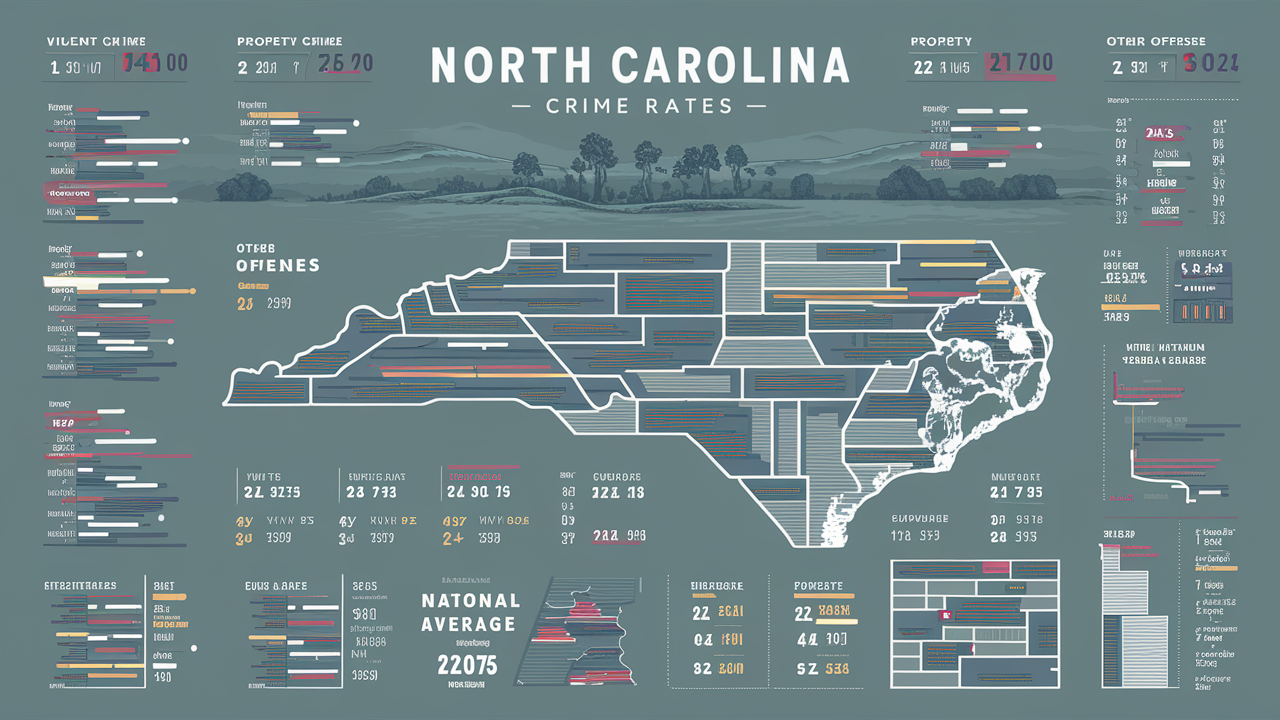This is valid considering the current statistics on violent crime in North Carolina as the state ranks very safe about other states in the United States. To see that the issue is not quite straightforward, one must examine the crime statistics more closely nevertheless. Other types of crime have been on the increase while violent crimes have dropped throughout the last decade. Moreover, variations in cities or counties in the state under inquiry help to significantly explain crime rates.
Detailed Violent Crime Trends by Type
Estimates filed into the FBI's Uniform Crime Reporting System indicate that North Carolina's violent crime rate peaked in 1993 at 747.7 events per 100,000 people. The general violent crime rate of the state also dropped routinely from the 1990s and into the 2000s. At last, North Carolina had a violent crime rate of 376.4 per 100,000 in 2014. Still, the state noted rising violent crime rates between 2014 and 2016; 2016 figures were at 407.7 per 100,000. Still, starting in the early 1990s, there has been a usually falling tendency. Furthermore, this ratio is still really high, and, under amplification, it may have a significant effect.
Murder Rate Analysis
With 11.3 murders per 100,000 people in 1993 North Carolina's murder rate peaked. From a level of state murders that dropped dramatically in the 1990s and 2000s to reach 5.5 per 100000 by 2014. From 2014 to 2016, the State's murder rate sadly increased by 20% to 6.6 murders per 100000. Criminologists are looking for the reasons even though there are many hypotheses behind the recent rise in the murder rate after more than twenty continuous years of declining trend.
Increasing Rates of Rape
Therefore, while from a historical standpoint, the murder rate in North Carolina is low, other kinds of violent crime, particularly aggravated assault, have been rising significantly over the previous decade. Particularly, compared to 2006-2016, the frequency of claimed rapes per 100,000 persons is greater now by 37%. Particularly rape, crimes against women remain a major concern in North Carolina; the 29.0 per 100,000 incidences as of 2016 exceeds the national average of 23.2%. Many have put forward many theories regarding the increase in rape occurrences.
That Crime rates differ across the regions in North Carolina.
Crime rates differ to a significant extent from one county in North Carolina to another. For instance, Graham County situated in the mountainous region in the western part of the state recorded 0.7 violent crimes per one thousand inhabitants in 2016. At the same time, in the northeastern part of the state, Halifax County was experiencing a level of violent crime of 10.2 per 1000, which was almost 15 times more. In particular, it is possible to mention that the urban North Carolina counties have considerably higher overall crime rates compared to rural ones. However, the comparison reveals that general trends in crime across the state obscure meaningful variations in the local area.
Key Takeaways
Although North Carolina has generally been performing well in terms of violent crime rate over the last 25 years, there are slight worrying signs in recent years such as murder and rape. Furthermore, violent crime is still relatively low when compared to North Carolinians living in more urban areas. Knowledge of these subtleties and tendencies distinguished by the type of crime or geographical regions is the information that allows the legislators to properly direct the efforts of police and other enforcement services. Further, sustained efforts and evidence-based approaches to crime prevention mechanisms will prove catalytic for North Carolina to regain the decreasing rate of violent crimes with the experience of the nineties and two-thousands.






